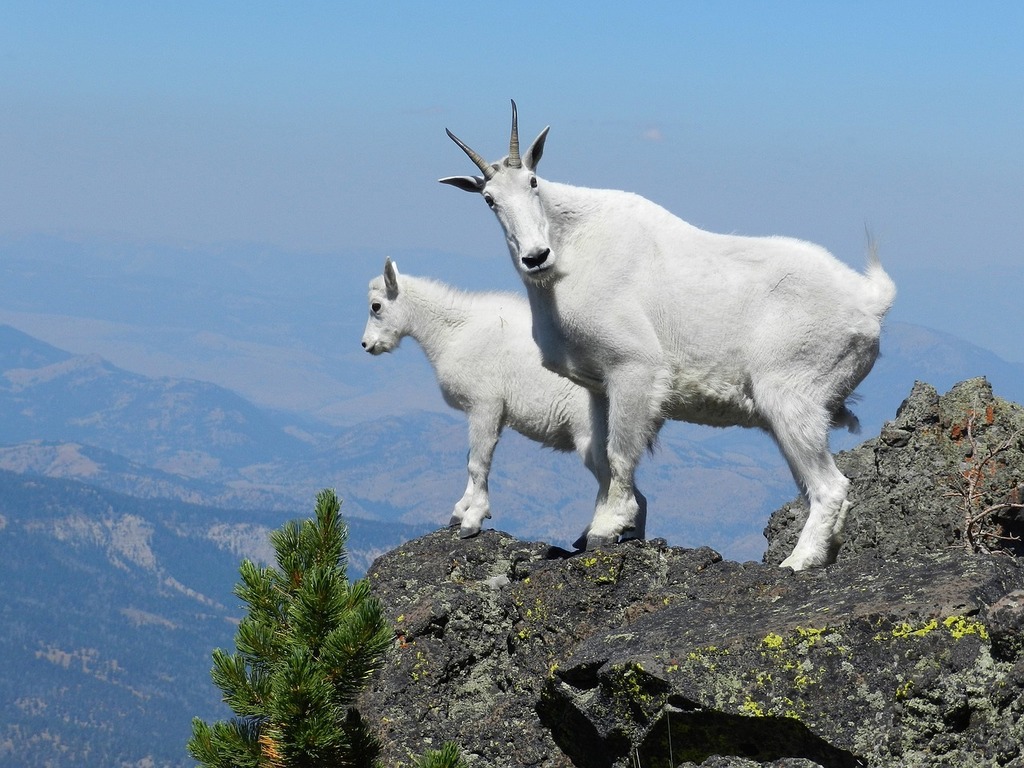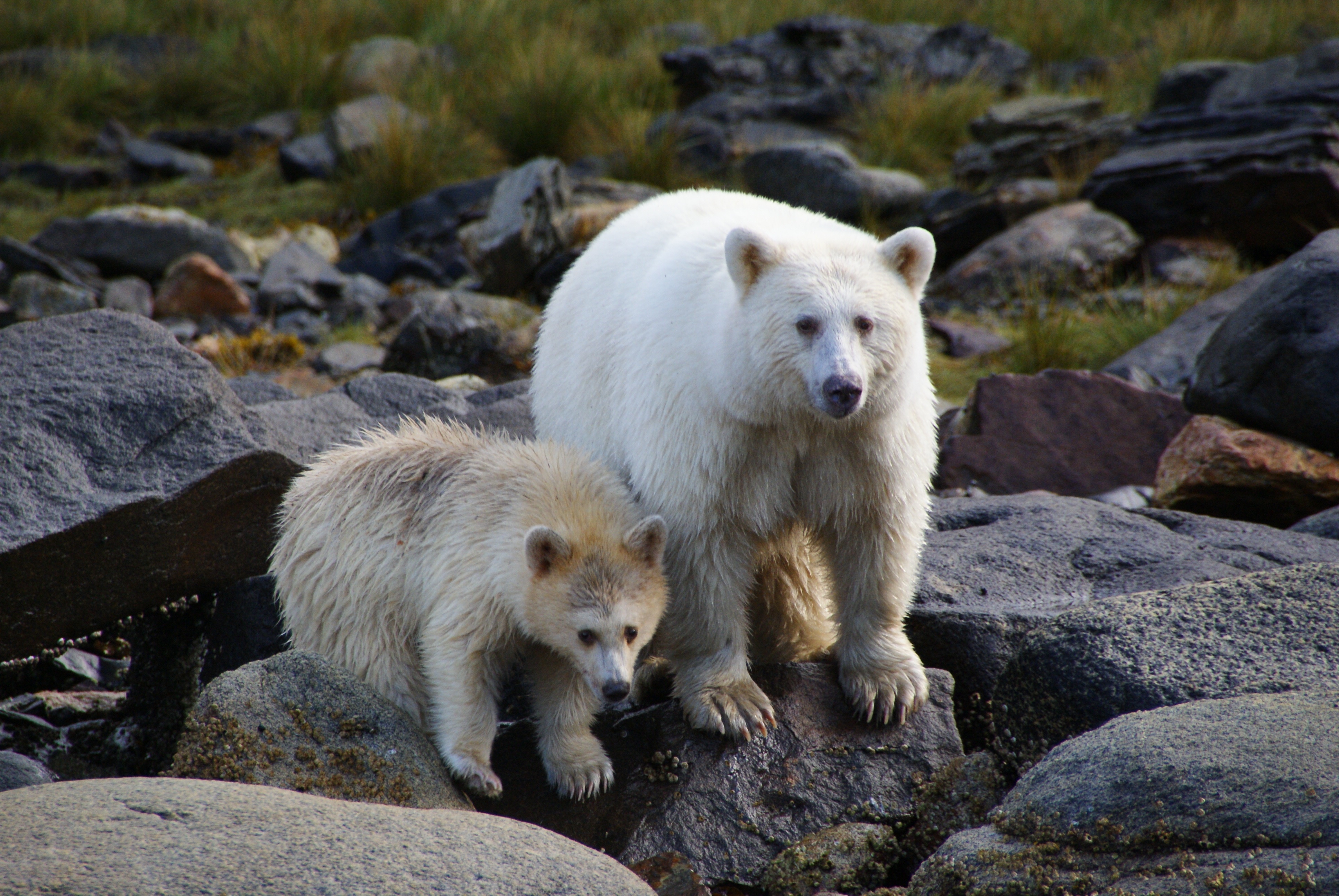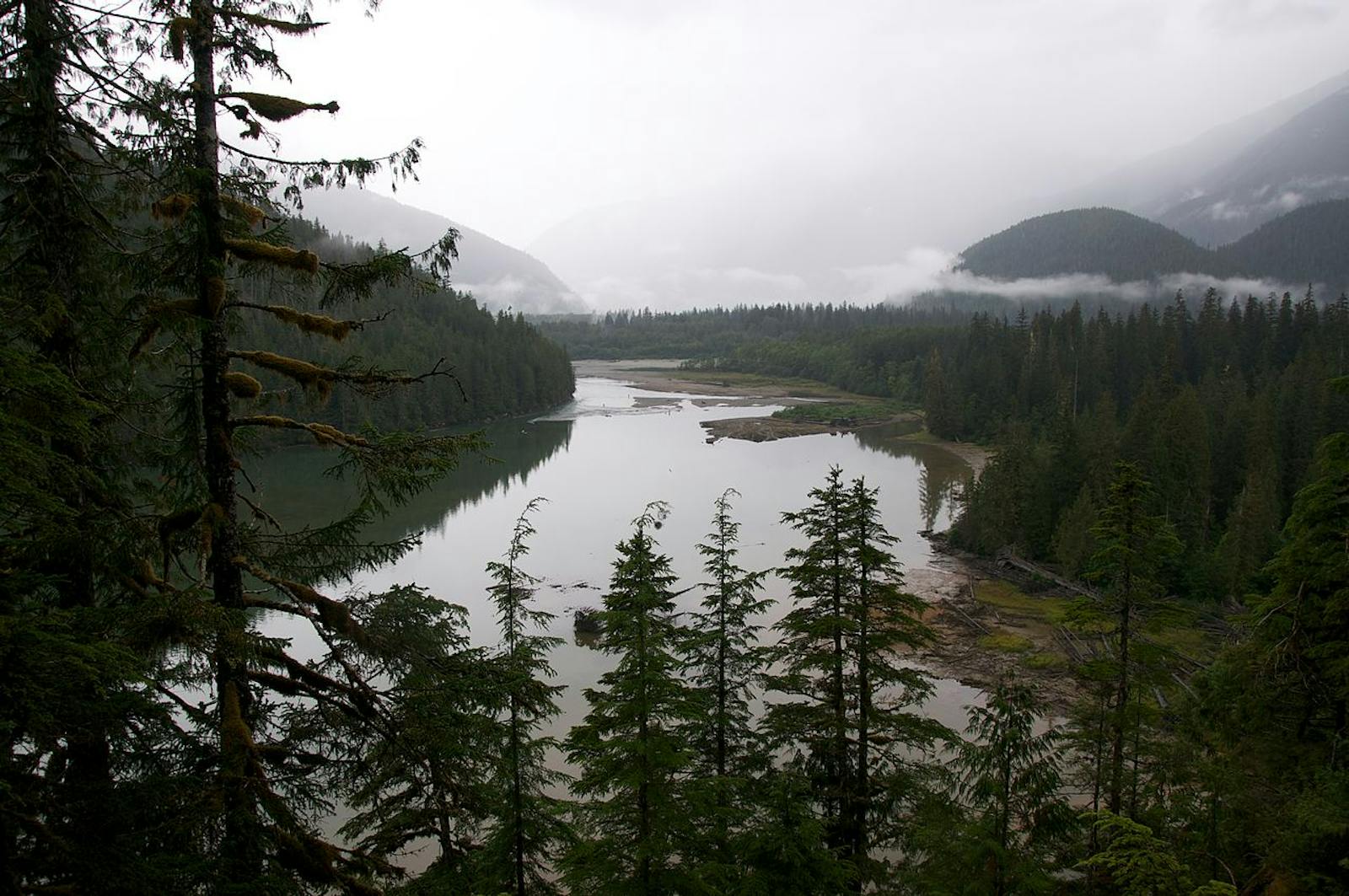British Columbia Coastal Conifer Forests
The ecoregion’s land area is provided in units of 1,000 hectares. The protection goal is the Global Safety Net (GSN1) area for the given ecoregion. The protection level indicates the percentage of the GSN goal that is currently protected on a scale of 0-10. N/A means data is not available at this time.
Bioregion: Pacific Northwest Coastal Forests (NA15)
Realm: Northern America
Ecoregion Size (1000 ha):
11,074
Ecoregion ID:
349
Protection Goal:
57%
Protection Level:
4
States: Canada: BC
The name of this ecoregion might be a bit misleading, because it does not directly abut the Pacific coast, but rather lies just inland of the Central Pacific Northwest Coastal Forests ecoregion within mainland British Columbia. However, a coastal influence remains strong across much of the ecoregion, allowing the development of temperate rainforests at some distance from the ocean. These forests are some of the most outstanding globally in terms of productivity, stature, and biomass.

The flagship species of the British Columbia Coastal Conifer Forests ecoregion is the mountain goat. Image credit: Creative Commons
In its northernmost extent, the British Columbia Coastal Conifer Forests ecoregion lies between the Pacific Coastal Mountain Icefields and Tundra ecoregion to the west and the Central British Columbia Mountain Forests ecoregion to the east. Proceeding southward, this ecoregion extends eastward to the crest of the Coast Mountains, where it borders the Fraser Plateau and Basin Conifer Forests and the Okanogan Dry Forests ecoregions to the east. Finally, the Puget Lowland Forests lie to the south and to the west (on Vancouver Island).
The British Columbia Coastal Conifer Forests ecoregion encompasses the Pacific Ranges (south) and Kitimat Ranges (north) of the Coast Mountains, and the Nass Ranges and Nass Basin in the far northern portion of the ecoregion. Elevations reach around 4,000 m in the Pacific Ranges, with the highest peaks surrounded by expansive ice fields. Given its latitudinal extent and steep elevation gradients, the climate and vegetation of this ecoregion vary tremendously.

Pacific silver fur. Image credit: Walter Siegmund, Creative Commons
Closest to the coast, the rainforests are heavily influenced by cool, moist air from the ocean, with heavy cloud cover and fog common year-round. Slightly drier and cooler conditions exist in the interior portions of the ecoregion. Annual precipitation ranges from 1,500 mm at lower elevations to 3,400 mm at higher elevations across most of the ecoregion, with most precipitation occurring in the winter. Summers are considerably drier, particularly in the southern portion. Mean annual temperatures are around 5ºC or lower in the northern portion of the ecoregion but average around 14ºC across most of the ecoregion, though are higher in the far south.
Conifers dominate the forests, especially the Douglas-fir/western hemlock community type, which includes western red cedar, amabilis fir, and other species. The subalpine zone is dominated by mountain hemlock and amabilis fir with some Alaskan yellow cedar. The moist forests of this ecoregion are less affected by fire than more inland forests at the same latitude. The lowland forests are especially rich in epiphytes (plants growing on trees), fungi, amphibians, birds, and soil and canopy invertebrates. Large stands of ancient forest remain in the Great Bear Rainforest region north of Vancouver Island on the mainland.

Kermode bear. Image credit: Creative Commons
This area, which extends through the Central Pacific Northwest Coastal Forests ecoregion to the Pacific Ocean, holds up to one-quarter of all coastal rainforest in the world and is known as the “Amazon of the North.” The Great Bear Rainforest is noteworthy for having both grizzly bears and a white color form of black bear known as Kermode or Spirit Bear, which occurs in roughly 10% of the bear population.
Other wildlife includes Pacific salmon and steelhead, tailed frog, northern spotted owl (just in the southernmost portion and nearly extirpated), northern goshawk, blue grouse, elk, woodland caribou, black-tailed deer (whose required habitat, especially in winter, is old-growth forest), mink, river otter, beaver, snowshoe hare, puma, wolves, and mountain goats. British Columbia is home to up to 60% of the mountain goat population of North America. The goats inhabit alpine and subalpine habitats in the mountains but appear to require low-elevation areas with reduced snow accumulation in winter.

Kermode bear. Image credit: Maximilian Helm, Creative Commons
This ecoregion is one of the most pristine in the Pacific Northwest. Some 22% of the ecoregion is protected and another 33% of habitat outside of protected areas is considered intact. Yet logging and other intensive human activities remain significant threats. Priority conservation actions for the next decade are to: 1) increase designation of conservation lands; 2) improve forest management on public and private lands, with no more logging of old-growth or naturally disturbed early-seral forest; and 3) where possible, reintroduce populations of locally extirpated species such as the wolf and grizzly bear.
Citations
1. DellaSala, D.A., F. Moola, P. Alaback, P.C. Paquet, J.W. Schoen, and R.F. Noss. 2011. Temperate and boreal rainforests of the Pacific Coast of North America. Pages 42-81 in D.A. DellaSala, editor. Temperate and Boreal Rainforests of the World. Island Press, Washington, D.C.
2. Ricketts, T.H. et al. 1999. Terrestrial Ecoregions of North America: A Conservation Assessment. Island Press, Washington, D.C.
3. Coast Information Team. 2004. An ecosystem spatial analysis for Haida Gwai, Central Coast, and North Coast British Columbia. Coast Information Team, c/o Cortex Consultants, Victoria, BC.


